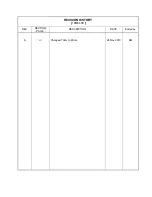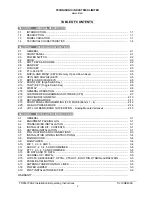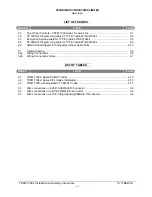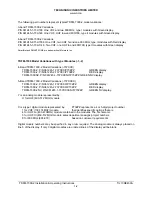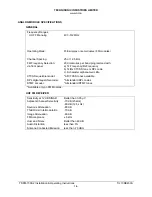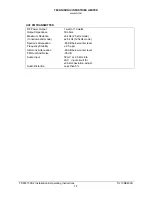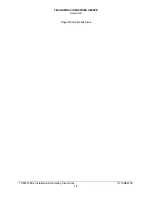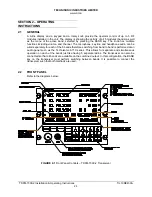
TECHNISONIC INDUSTRIES LIMITED
www.til.ca
TDFM-7300-2 Installation & Operating Instructions
TiL 10RE430A
1-1
SECTION 1 - GENERAL
DESCRIPTION
1.1 INTRODUCTION
This publication provides operating and installation information on the TDFM-7300-2 airborne
transceiver. The exact configuration depends on which and how many RF modules are installed.
1.2
DESCRIPTION
The TDFM-7300-2 transceiver is an airborne multi-band radio capable of operation in
conventional analog and P25 digital FM systems, SmartNet/SMART ZONE trunking systems and
P25 9600 trunking systems. Type II RF modules are available in VHF, UHF LO, UHF HI and
700/800 MHz bands.
These optional additional features include P25 9600 Baud trunking that may be combined with
AES and/or DES-OFB encryption with OTAR in any of the available modules.
Bands 1 through 4 on the TDFM-7300-2 are not normally frequency agile. In order to have the
ability to change the frequencies at the front panel, the FPP (front panel programming) option
must be ordered. FPP is only available on the VHF and UHF modules. The FPP option precludes
trunking and limits available channels to 240 (15 zones/16 channels) on that module instead of
1000 channels. Please note that all 240 memories must be filled if FPP is ordered.
The TDFM-7300-2 has provisions for four of the above RF modules as well as one analog only
module. This additional module is fully frequency programmable from the front panel. FM only
modules support CTCSS, DCS, FM wide and narrow band operation. FM bands available are
VLO, VLO2, VHF and UHF.
1.3
MODEL VARIATION
Irrespective of digital module type the bands are numbered 1, 4, 5 and 8 for VHF, UHF low, UHF
Hi and 800/700 respectively. The transceivers part number indicates whether type I (-1, -2) or
type II (-3, -4) modules are installed along with which type of modules are installed. The front
panel LED display will also indicate which type of modules the transceiver contains.



